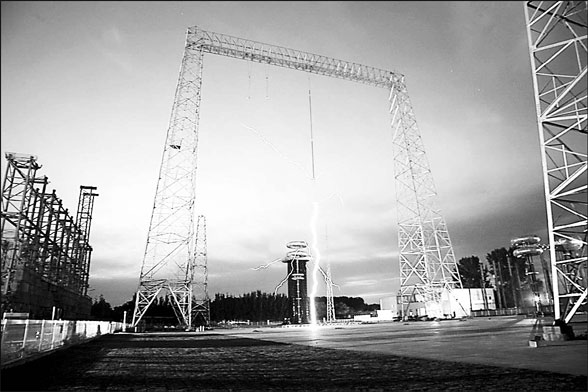


Two ultra-high voltage (UHV) power grids are under construction by the country's largest electricity transmission company, State Grid Corp of China, the latest round of expansion in that power industry that will alone require an investment of 20 billion yuan.
Last December, State Grid began building its first 800-kv UHV direct current (DC) power transmission line linking Sichuan and Shanghai. With a capacity of 6.4 million kW it is the world's largest DC power project in both capacity and distance.
The 18 billion yuan project will transmit the electricity produced by the Xiangjiaba and Xiluodu hydropower stations on the Jinsha River in Southwest China's Sichuan Province that together have a total capacity greater than the Three Gorges Project.
The line is expected to come into operation in 2010.
Once completed, the project will transmit 30.5 billion kWh of electricity a year. It will also save 15 million tons of coal and reduce 25 million tons of carbon dioxide emissions a year, a source with State Grid tells China Business Weekly.
"The project will not only improve the country's power transmission technology greatly, it will also boost the power equipment manufacturing industry," says the source, who declined to be named.
Last December, State Grid signed agreements with nine companies for the equipment supply. Global power giants Siemens and ABB, together with seven domestic companies, will supply advanced products with a total value of 7 billion yuan.
Before the Sichuan-Shanghai line, State Grid started the construction of its first 1000-kv UHV alternating current (AC) power transmission line. The project will link the southeastern parts of coal-rich Shanxi Province with Jingmen city in Hubei Province, passing Nanyang city in Central China's Henan Province.
The grid, extending over 600 km and crossing the Yellow and Hanjiang Rivers, required an investment of around 5.8 billion yuan. "State Grid expected to complete the project this year," the source tells China Business Weekly.
The two lines will be used as pilot projects to provide technology and experience for future UHV projects by State Grid. The company expects to develop UHV projects with a total transmission capacity of 260 million kwh by the year 2020.
The company has built two UHV grid test sites in the country for research and development, with the DC test base in Beijing and the AC facility in Wuhan in Hubei Province.
During the 11th Five Year Plan (2006-10) period the company will invest 102.2 billion yuan on expanding and upgrading the nation's electricity transmission network.
Debate
Compared with power grids of 500 kv or 300 kv, UHV projects have several advantages. "The capacity of one 1,000 kv UHV line is five times of that of a 500 kv line and its power waste during the transmission process is only 25 percent of (lower voltage lines)," the State Grid source says.
Developing UHV projects, which can transfer large amounts of electricity over long distances, will ensure stable energy supply and improve resource allocation in the country, according to State Grid President Liu Zhenya.
As the world's fastest growing economy, China has seen rapid growth in the power sector. By the end of 2006, the total installed power capacity in the country was 622 gW. The country plans to increase total capacity to 950 gW by 2010.
But the country has seen an imbalance in its energy resources for power generation. Two-thirds of the water resources that can be developed are in Yunnan, Sichuan and Tibet. Over two-thirds of coal resources are in Shanxi, Shaanxi and Inner Mongolia.
China has quickened its pace in the nuclear industry, but now all nuclear plants in operation and most planned plants are in eastern coastal regions.
Yet two-thirds of the country's electricity demand comes from the eastern regions. In 2004, electricity shortages occurred in 24 provinces in China with the east of the country suffering most.
"UHV projects can solve the problem of strongly growing power consumption in one part of the country but natural resources for generating the power far away," Liu says.
"What's more, construction of UHV projects will also contribute to China's efforts in energy savings and environmental protection."
Still, many experts oppose the UHV projects, saying such a big investment will only result in a waste of money and energy.
"A network of UHV power transmission lines makes higher requirements for operational safety and reliability. Now China is not capable of developing such projects," says a veteran power analyst, who declined to be named.
The former Soviet Union and Japan have started UHV projects, but none are yet in operation.
Analysts also say the country is now improving the railway system to meet with coal transportation needs, spanning the distance between power demand and resources.
"For UHV DC projects, now there is no problem with the technology. But for AC projects, more research work should be done to ensure the feasibility," says Han Xiaoping, vice-president of Beijing Falcon Pioneer Technology Co Ltd.
"China should undertake UHV projects more cautiously to decide whether to expand them."
(China Daily 01/05/2008 page5)













